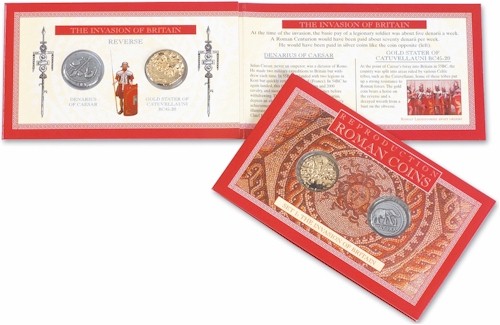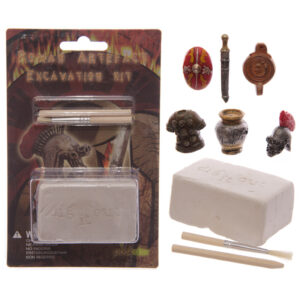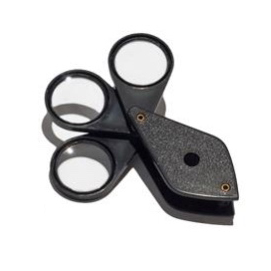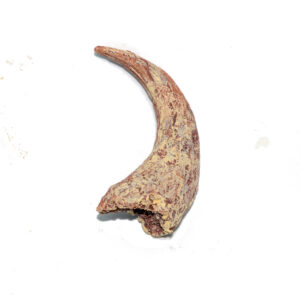Description
Roman Coin Set 1 – The Invasion of Britain
Roman coins were not just a means of paying for goods. The obverse of the coins portrayed the ruling Emperor’s face. The reverse of the coins were used to communicate great events or to promote the status of the Emperor to his people. For example, the Emperor may have depicted a god that had attributes with which he wished to be associated. The coins were circulated throughout the Empire bringing news, perhaps of events that had taken place far away.
At the point of Caesar’s foray into Britain in 55BC, the country was split into areas ruled by various Celtic tribes such as the Catuvellauni. Some of these tribes put up a strong resistance to the Roman forces. At the tiime of the invasion of Britain, the basic pay of a legionary soldier was about five denarii a week. A Roman Centurion would have been paid about seventy denarii a week.
Our reproduction Denarius of Caesar was struck in 49BC and is made from lead-free pewter. The coin celebrates Caesar’s conquest of Gaul and has the Emperor’s name and an elephant trampling a serpent on one side and a simpulum, sprinkler, axe and priests hat on the other, publicising his office as chief priest.
The Gold Slater of Catuvellauni was struck between 45-20BC. This reproduction 22ct gold plated slater coin is made from lead-free pewter and shows a horse on one side and a decayed wreath from a bust on the other.
The two coins are held in clear plastic blisters and are supplied in full colour pamphlet style packaging, complete with images and historical information relating to Roman coins and the invasion of Britain.






Reviews
There are no reviews yet.